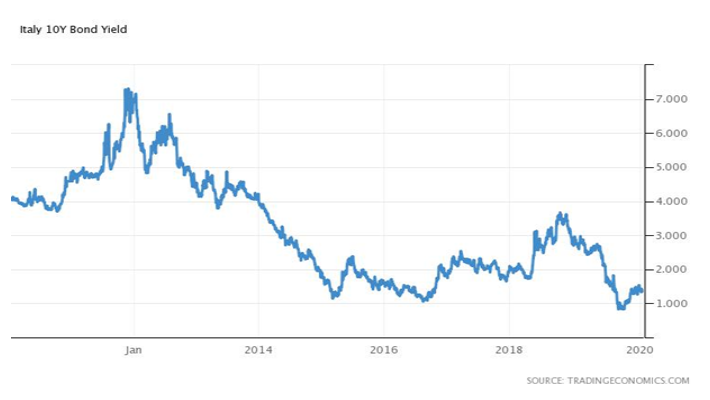Forex Trading
Gross Profit Importance and Limitations How to Calculate Gross Profit?
Contents
Net profit is the total earnings or profitability of a business. The sum is derived after deducting expenses and costs from the total sale revenue. Therefore, compute your earnings before deducting expenses to determine your gross profit. Subtract all expenses from your incoming revenue to arrive at your net profit.
Here, the net sales revenue refers to the total revenue less the cost of sales returns, allowances and discounts. Whereas, the cost of sales refers to all the costs incurred to create a product or a service. Whereas a gross profit margin is the margin before taxes and interest, it does account for depreciations and ammortization in the cost part of the equation. A net profit margin would include deductions of taxes and interest payments. In order to calculate it, include taxes and interest in the value for the “Cost” input field in our profit margin calculator.
This is where you are surrounded by terms and jargon that need some explaining. With time being of the essence in intraday trading, it is important to understand these terms. Two such terms are gross profit and net profit that we will attempt to explain.
- Examples of direct costs are direct labour and direct materials.
- As a stock investor, analyzing the financial statements of a company is essential to determine its reliability and profitability.
- The fraudsters are luring the general public to transfer them money by falsely committing attractive brokerage / investment schemes of share market and/or Mutual Funds and/or personal loan facilities.
- However, low Net Profit implies that its other costs are high enough to eat into the revenue earned via sales.
At the end of the year, it had a closing inventory of Rs. 40,000. Basically, when you break down any business activity anywhere in the universe, a business is basically two things, there are costs, and there is revenue. It’s another crucial metric, especially for larger businesses, and it’ll frequently be compared to employee retention rates. When assessing turnover, businesses that give credit to customers can use the term “accounts receivable” to describe the time it takes for customers to pay their bills. The rate at which inventory or assets are sold or reach the end of their useful life is known as business turnover.
Even though both gross profit margin and net profit margin shows the company’s profitability. Thus, the former is derived by deducting the cost of goods sold from total sales and the latter is computed by deducting all expenses and obligations from total sales. As a result, the company’s gross profit is always higher than the net profit. The following is the formula to calculate the net profit margin.
Usually, they are variable costs.It includes all the company’s expenses, like selling and administration expenses. Usually, they are fixed costs.Both gross profit margin and net profit margin are critical to assess the company’s financial health. Both are to be watched closely on a trend line, and any deviation may trigger an investigation by the management.
What is the Formula to Calculate the Gross Profit Margin?
In other words, it is the excess of revenues in an accounting period over the costs directly related to providing services or production of goods. Such costs can be broadly bifurcated into manufacturing expenses and labour costs. Gross profit is presented on a multiple-step income statement prior to deducting selling, general and administrative expenses and prior to non-operating revenues, non-operating expenses, gains and losses. Net profit is the amount that remains after the company has paid not only for the cost of producing goods but also for interest, taxes, and other operating costs over the given period of time. When this amount is negative it is called the net loss and not the net profit. As a business owner, one of the most important factors that you will have to monitor is the profit that your company is making.
Gross Profit Margin helps measure the company’s profit from its total sales after deducting the direct costs or cost of goods sold. It is a simple metric to evaluate how efficiently the company manages its labour and raw materials during the production process and generates profits. Analysing any financial ratio is crucial for the fundamental analysis of a company. They show different aspects of an organisation’s profitability and cost-efficiency.

Gross margin is expressed as a percentage of the revenue remaining, post the cost of servicing that revenue. Generally, gross profit margin is calculated as the selling price of an item, minus the cost of goods sold. The ratio of gross profit with net sales is called the gross profit ratio whereas if we talk about gross profit margin or gross profit percentage. It is calculated when we express the gross profit ratio in the form of a percentage. The two basic components in the GP ratio are net sales and gross profit, information regarding which is available in the income statements of the firm/ business/ company. Gross profit is arrived upon by subtracting the cost of goods sold from net sales, however, net sales are calculated by subtracting return inwards and discount allowed from the gross sales.
Gross Profit Example
While a profit margin calculation is useful in itself, some might need more context to interpret the numbers. Generally, a good profit margin should allow the business to cover its variable and fixed expenses and turn a profit with which to compensate the capital owners for their risk . This is individual to every business or investment project and what is a “good profit margin” depends very much on the options it is compared with, as well as the estimated risk. Both input values are in the relevant currency while the resulting profit margin is a percentage (gross margin percentage, e.g. 10%) arrived at after multiplying the result by 100. Note that our profit margin calculator does not do any currency conversions, so make sure you input the values in the same currency.
It is actually the relationship between net profit after taxes and net sales in percentage. It is great for internal comparisons of one period versus another, identifying trends in profitability, as well as comparisons to businesses of similar industries, niches, sizes and age. In the above illustration we are considering a paint company where the cost of goods sold has gone up due to a sharp rise in the price of raw materials due to rise in global crude oil prices. As a result the gross profit margin has come down sharply over the previous year.
It provides a more detailed understanding of a company’s profits since all expenses are accounted for in this case. While the gross profit amount can increase or decrease depending upon your business turnover, you should strive to maintain the gross profit margin ratio. Therefore, the gross profit margin is an important profitability ratio, and financial experts use it to determine the profitability of a business.
Let us understand the concept of gross profit and operating profits with the help of an example of a company over a period of 2 years. Gross Profit (G.P.) is that part of the revenue which is left after deducting all direct cost/expenses from the Net Sale. COGS include all the cost incurred on the production of the product in the manufacturing https://1investing.in/ unit or in the trading unit cost of requisition of the product. A higher markup price and lower cost of goods sold would increase the gross profit margin. The gross profit margin compares the difference between the revenue and cost of goods sold, against revenue. Compute the gross profit ratio and gross profit percentage of the company.
Alculated by deducting all the expenses and costs from the revenue. The income from other sources is also added to revenue before deducting because some businesses have more than one source of income other than the revenue generated what denotes gross profit from the business. The income sources and costs are reported separately in the income statement. For instance, a business in the service industry will not have manufacturing costs, but all their costs would be operating costs.

Now, when the gross profit ratio is explained in form of a percentage, the ratio is multiplied by a hundred so as to arrive percentage and it is signified as gross profit percentage or gross profit margin. To compute the net profit margin, simply use the gross margin equation above, but include taxes and interest payments in the cost variable. For gross margin Cost means just the cost of goods sold and operating expenses whereas for net margin it is cost of goods sold and expenses plus taxes plus interest payments on debt capital. As a stock investor, analyzing the financial statements of a company is essential to determine its reliability and profitability. By understanding the difference between gross and net profit, you can get a clearer picture of the company’s financial performance and make informed decisions.
For the calculation of GP ratio, however, we focus on the first set of costs, that is the costs that were incurred to bring the raw material in and convert them into finished goods. Gross Profit ratio is basically gross profit represented as a percentage of sales. The same way, profits by themselves mean nothing except telling you this is the amount of surplus that was earned. That is exactly what ratios do, they serve as sort of comparison giving a figure that is not absolute, but relative to something else. A profitability ratio that establishes a relationship between the gross profit of a firm and its total net sales is known as Gross Profit Ratio or GP ratio. This ratio can be quite helpful in the evaluation of the operational performance of the concerned business.
The drawback of gross profit and net profit
Gross profit excludes others expenses like cost involved in repaying debt , taxes, operating and overhead costs and investment in equipment. In both the above-mentioned formulas, the two required components are gross profit as well as net sales. This information can be collected from the income statement of the company.

Policies regarding information collection and sharing may differ on some of these co-branded sites. If you have any particular questions, you should check the privacy statement that appears on each co-branded site. Sharekhan Comtrade Private Limited does, however, gather certain information that is provided by you to the Web Site. The offer is open only for a limited period at the sole discretion of the company and applicable only to new accounts opened up to Jan 31, 2023. The offer is only for waiver of account opening charges of Rs 354.
Calculation
Such intimation shall only be taken into account from the date on which the same is received. Sharekhan Comtrade Private Limited may choose to stop services to such a client in case such intimation is received. Such information shall only be used for the purpose it is collected. Sharekhan Comtrade Private Ltd run contests on the Web Site in which we ask visitors for contact information (like their e-mail address). Sharekhan Comtrade Private Limited uses contact data from its contests to send users information about Sharekhan Comtrade Private Ltd. and promotional material from some of our partners.
Thus, it is clear that the Gross Profit for the current year has increased as compared to the previous year. For calculation of GP ratio here, we first calculate the Gross profit. During the year, the company returned raw material worth Rs. 50,000 to its supplier, Scorpion ltd, because the goods were defective. Also, goods sold, worth Rs. 70,000 were returned back to the company because they were defective as well.
Gross Profit Calculations With Example
Income Statement of a company is one of the richest sources of information concerning its financial health and standing. There are numerous measures in an Income Statement that facilitate one’s understanding of the factors as mentioned earlier. The ultimate goal of every business is to be profitable and make money from their manufacturing. In order to be profitable, the company must be able to sell its goods for an amount that is more than the cost incurred producing them. First, while it gives an idea of the company’s costs compared to sales, it only looks at manufacturing costs, which is basically saying it doesn’t factor in other costs. This could very well mean the difference between profit and loss.
